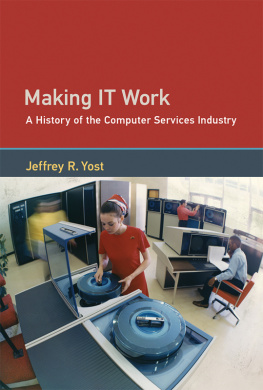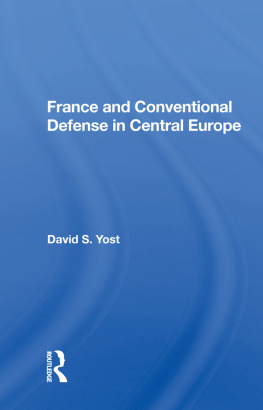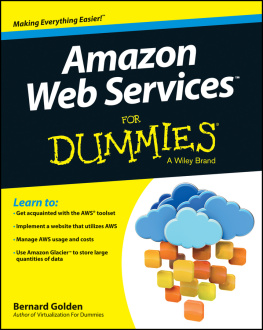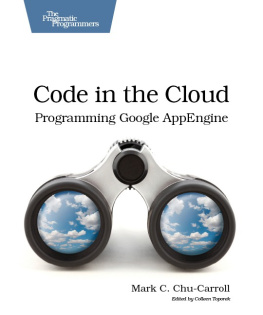
History of Computing
William Aspray and Thomas J. Misa, editors
Janet Abbate, Gender in the History of Computing: Reimagining Expertise, Opportunity, and Achievement through Womens Lives
John Agar, The Government Machine: A Revolutionary History of the Computer
William Aspray and Paul E. Ceruzzi, The Internet and American Business
William Aspray, John von Neumann and the Origins of Modern Computing
Charles J. Bashe, Lyle R. Johnson, John H. Palmer, and Emerson W. Pugh, IBMs Early Computers
Martin Campbell-Kelly, From Airline Reservations to Sonic the Hedgehog: A History of the Software Industry
Paul E. Ceruzzi, A History of Modern Computing
I. Bernard Cohen, Howard Aiken: Portrait of a Computer Pioneer
I. Bernard Cohen and Gregory W. Welch, editors, Makin Numbers: Howard Aiken and the Computer
Thomas Haigh, Mark Priestley, and Crispin Rope, ENIAC in Action: Making and Remaking the Modern Computer
John Hendry, Innovating for Failure: Government Policy and the Early British Computer Industry
Marie Hicks, Programmed Inequality: How Britain Discarded Women Technologists and Lost Its Edge in Computing
Michael Lindgren, Glory and Failure: The Difference Engines of Johann Mller, Charles Babbage, and Georg and Edvard Scheutz
David E. Lundstrom, A Few Good Men from Univac
Ren Moreau, The Computer Comes of Age: The People, the Hardware, and the Software
Arthur L. Norberg, Computers and Commerce: A Study of Technology and Management at Eckert-Mauchly Computer Company, Engineering Research Associates, and Remington Rand, 19461957
Emerson W. Pugh, Building IBM: Shaping an Industry and Its Technology
Emerson W. Pugh, Memories That Shaped an Industry
Emerson W. Pugh, Lyle R. Johnson, and John H. Palmer, IBMs 360 and Early 370 Systems
Kent C. Redmond and Thomas M. Smith, From Whirlwind to MITRE: The R&D Story of the SAGE Air Defense Computer
Alex Roland with Philip Shiman, Strategic Computing: DARPA and the Quest for Machine Intelligence, 19831993
Ral Rojas and Ulf Hashagen, editors, The First ComputersHistory and Architectures
Dinesh C. Sharma, The Outsourcer: A Comprehensive History of Indias IT Revolution
Dorothy Stein, Ada: A Life and a Legacy
John Vardalas, The Computer Revolution in Canada: Building National Technological Competence, 19451980
Maurice V. Wilkes, Memoirs of a Computer Pioneer
Jeffrey R. Yost, Making IT Work: A History of the Computer Services Industry
Making IT Work
A History of the Computer Services Industry
Jeffrey R. Yost
The MIT Press
Cambridge, Massachusetts
London, England
2017 Massachusetts Institute of Technology
All rights reserved. No part of this book may be reproduced in any form by any electronic or mechanical means (including photocopying, recording, or information storage and retrieval) without permission in writing from the publisher.
Set in ITC Stone Sans Std and ITC Stone Serif Std by Toppan Best-set Premedia Limited. Printed and bound in the United States of America.
Library of Congress Cataloging-in-Publication Data
Names: Yost, Jeffrey R., author.
Title: Making IT work : a history of the computer services industry / Jeffrey R. Yost.
Description: Cambridge, MA : MIT Press, [2017] | Series: History of computing | Includes bibliographical references and index.
Identifiers: LCCN 2017002542 | ISBN 9780262036726 (hardcover : alk. paper)
eISBN 9780262342179
Subjects: LCSH: Computer service industry--History.
Classification: LCC HD9696.2.A2 Y67 2017 | DDC 338.4/700409--dc23 LC record available at https://lccn.loc.gov/2017002542
ePub Version 1.0
To Linda, John, and Chris
Acknowledgments
Above all I am grateful to my colleagues at the Charles Babbage Institute. Thomas Misa read the entire manuscript and offered many insightful suggestions. Additionally, he helped me free up substantial time (from my other CBI responsibilities) in 2016 to enable me to finish researching and writing the manuscript. Kathryn Charlet expertly proofed the whole manuscript, correcting errors and offering very useful stylistic suggestions. Past and present CBI archivistsArvid Nelsen, Stephanie Crowe, and Amanda Wickwere also helpful to my research and in facilitating the use of CBI photographs. CBI Senior Research Fellow James Cortada has been an extremely valuable sounding board for ideas on this book project, as well as many other book and article efforts, and he read and commented on chapter 10 of the manuscript. I am also very grateful to my colleagues on the faculty in the History of Science, Technology, and Medicine at the University of Minnesota, a terrific and collegial group of scholars who have always been encouraging. Professor Emeritus from the program and CBIs founding director Arthur Norberg provided very useful guidance, as did the late Michael Mahoney, in my early years as a computer history specialist, to whom I will always be deeply indebted.
Coeditor of the History of Computing series for the MIT Press (along with Misa), William Aspray has been very helpful to me on this book project and throughout my career. He has frequently and expertly offered comments and guidance on my scholarly work. Similarly, Martin Campbell-Kelly has generously provided important feedback and encouragement for nearly two decades. Nathan Ensmenger has also been an invaluable colleague. I had a number of discussions with all three of these scholars regarding our revision to the jointly authored Computer: A History of the Information Machine, 3rd Edition. These discussions led to concentrated reflection on the past two decades of IT history, which was useful to me in thinking about the context of the recent history of computer services.
My book primarily is based on archival research, which I supplemented with some oral histories, trade literature, and other sources. Burton Grad and Luanne Johnson (industry veterans who were founders of Software History Center and longtime leaders of CHM Software Industry SIG) were helpful in facilitating donations of archival materials to CBI on the computer services industry (and also on software products). Among other collections, they assisted with ITAAs donation of the ADAPSO organizational records to CBI. The records of this association were invaluable to my writing of chapter 5. Further, Burt and Luanne organized and ran multiple history workshops on the IT services industry. They invited me to participate (as a moderator and oral historian) in all of these events, which was extremely beneficial to my research. Burt and Luanne donated many of the oral histories from these workshops to CBI (and the others to CHM). And Burt generously read the entire manuscript of this book prior to my submission of it to the MIT Press. I am very grateful to both Burt and Luanne. I am also very grateful to Kohichiro Hotta, Director of Fujitsus Heritage Hall, for his guidance regarding resources on Fujitsus services history.
The history of computing academic community is fast growing but remains very friendly and close-knitquite simply, a terrific environment for scholars. One key factor to this camaraderie is the thriving Society for the History of Technologys (SHOT) Special Interest Group in Computers, Information, and Society (SIGCIS). Thomas Haighs skillful leadership of SIGCIS for many years led to this organizations growth in membership and its increased scholarly engagement (especially the Sunday SHOT SIGCIS workshop). Andrew Russell took over from Tom in recent years and with his dedicated leadership the organization has continued to reach new heights. I am so grateful to both Tom and Andy. There are many members of SIGCIS who have commented on my written work and conference papers, and/or who I have had fruitful conversations with on the history of computing. Among these scholars, I would especially like to thank Janet Abbate, Atsushi Akera, Gerard Alberts, Ross Bassett, David Brock, Paul Ceruzzi, Gerardo Con Diaz, David Grier, Lars Heide, Marie Hicks, Peggy Kidwell, David Kirsch, Chigusa Kita, Jennifer Light, Ken Lipartito, Eden Medina, Mara Mills, Joe November, Joy Rankin, Corinna Schlombs, Rebecca Slayton, Hong-Hong Tinn, Ksenia Tatarchenko, Steven Usselman, and David Walden. In SHOT, but outside of SIGCIS, I wish to offer special thanks to Carroll Pursell and David Hochfelder. I am also deeply grateful to family and friends who have always been gracious and helpful at every step.
Next page






